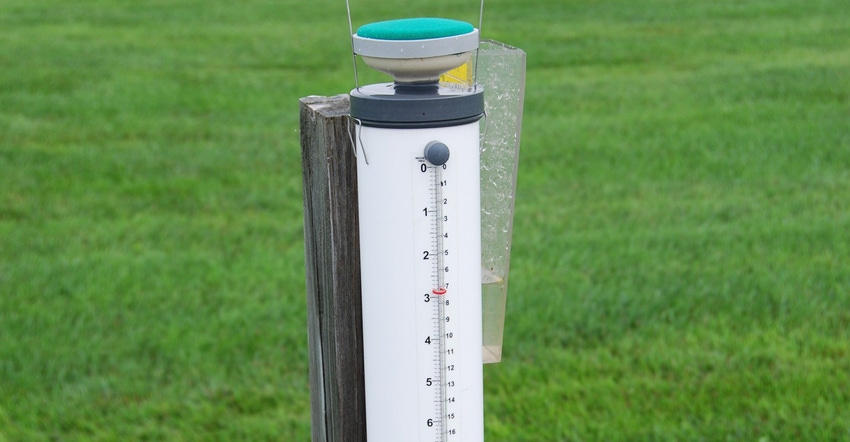June 8, 2018

Nebraska Extension advises cooperators to set up ET gauges and soil water sensors for better water management during the irrigation season.
If you have an ETgage Evapotranspiration Simulator, you can watch the assembly video for a refresher on how to set it up. Be sure to use distilled water and watch for air bubbles. Also, it is best to replace the green canvas covers and white wafers that cover the ceramic top on an annual or biennial basis to ensure accurate readings. If you need help setting up your gauge, contact the Nebraska Agricultural Water Management Network.
Share your readings
Once you have your ETgage in the field, NAWMN encourages cooperators to post their weekly readings to the NAWMN website. Taking a couple minutes each week to post the ETgage readings helps make reading the gauge a habit and will benefit the network.
Regular postings also will help you gain trust in the readings when you see other sites with similar evapotranspiration values.
But readings may not be always similar, even within several miles in radius, as ET is impacted locally by various climatic and microclimatic variables. As a result, having an ETgage near your individual production fields can provide more accurate local crop water use data.
To participate, visit nawmn.unl.edu. On the main screen, log into your existing site by entering your site name and password and clicking on "Login." If you are a new cooperator, click on the "Register new site" on the main screen and fill in the required information.
If you've forgotten your site name or password, contact Aaron Nygren at [email protected] or 402-352-3821. He can also help if you need assistance in changing the location of your ETgage on the Google map or if you need to change the day of week that you take readings.
Once you have logged in, you will be taken to your weekly data from previous weeks, including last year. To enter your weekly data, look for the "My Site" link on the top red ribbon and hover over it with your cursor to see a "Manage ETgage Data" link. After clicking on this link you will see an "Add new ETgage reading" link that will take you to the data entry page. Here you can enter crop growth stage, rainfall and ETgage change.
When you view weekly ET data on the website, remember that sites with up-to-date data are either red for alfalfa covers or dark green for grass covers. Inactive sites are grey for alfalfa covers or light-green for grass covers. Blue sites are High Plains Regional Climate Center automated weather data network stations.
Proper probe setup
In addition to ETgages, it is also time to install soil moisture sensors. Early installation is key to making sure that roots aren't damaged during installation and sensors are reading actual soil water conditions. Early installation also enables roots to develop around the soil moisture sensors, which results in better representation of the soil water conditions around the plant roots.
This report comes from UNL CropWatch.
You May Also Like




